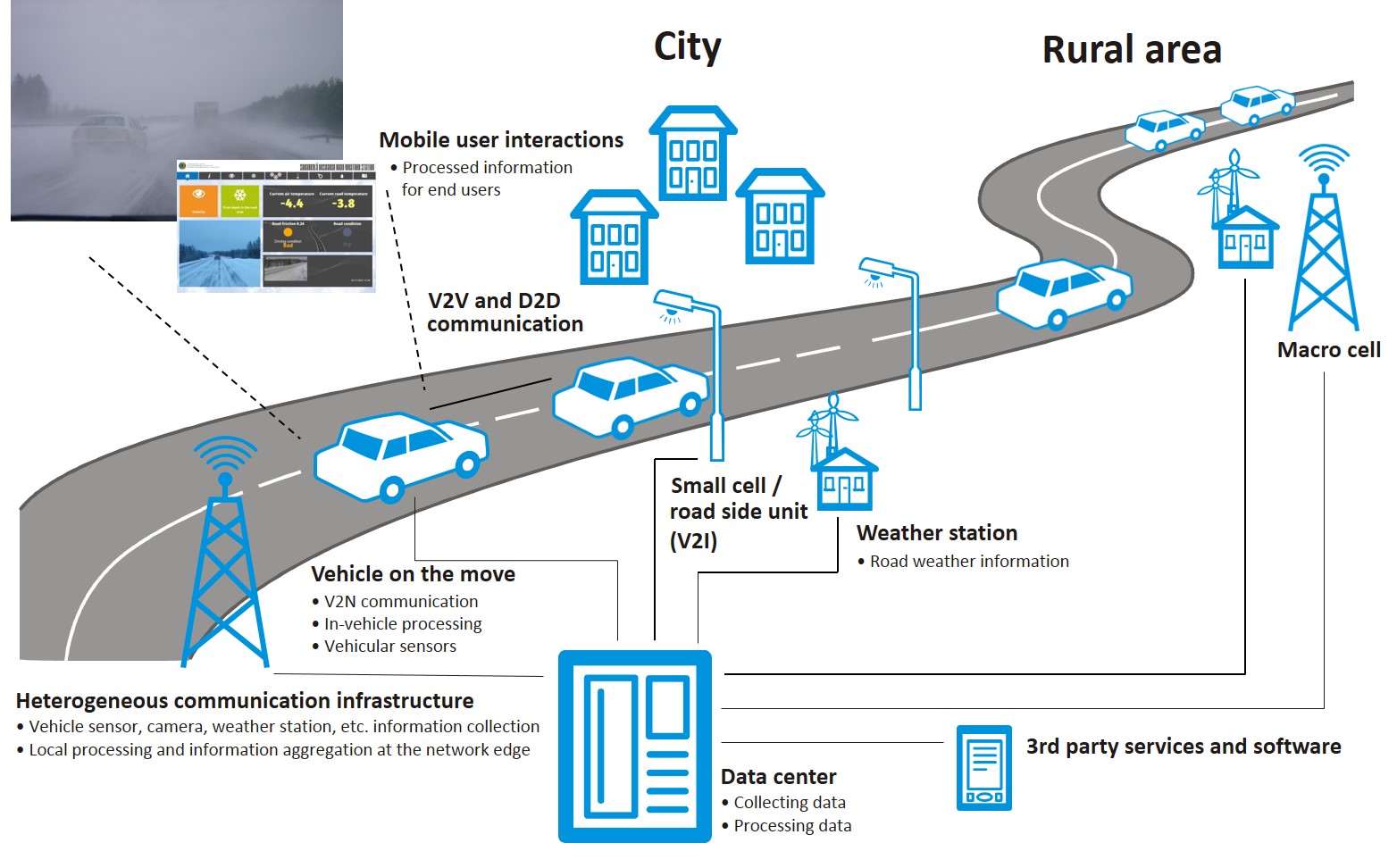In Finland, created an autopilot for driving on snow-covered roads without road markings

Unmanned car Martti. Photo: VTT Technical Research Center of Finland Ltd / Flickr
The Finnish Technical Research Center VTT has developed the first Martti unmanned vehicle in the world, which fully automatically moves on snow-covered roads. Moreover, this car set a new speed record on the 10-kilometer test track for the Aurora E8 . The route is located in Finnish Muonio, a map of the road indicating the locations of infrastructure for robokars .
Martti robokar made on the chassis of the Volkswagen Touareg. The German SUV is equipped with cameras, sensors, antennas and lidars.
In parallel with the Martti, VTT engineers are testing another unmanned vehicle, the Marilyn. They differ in the location of the sensors. For example, at Martti three laser scanners study the space only in front of the car, while at Marilyn two scanners look forward, and one back.
VTT project manager Matti Kutila (Matti Kutila) explained that the Martti autopilot is designed specifically for driving in difficult weather conditions, and his “sister” Marilyn is for city roads. The autopilot Marilyn was developed in the spring of 2017, then he could move taking into account the GPS coordinates and local information about his location, which comes with the sensor. This fall, the Martti autopilot also reached the same level of development.
Software development for Marilyn required much more effort, because its autopilot was created from scratch, but Martti already used the existing software, which was customized and tailored to the required conditions.
On the video: footage of autopilot movement on a snow-covered road without Aurora E8 marking. Although the contours of the road are almost invisible, the car confidently keeps to the right and fits into the corners.
Martti passed a continuous 24-hour test on the track in Muonio, and then managed to set a speed record of 40 km / h there. The developers believe that this is a world speed record in a fully automatic driving on a snowy road in conditions of snowfall on the road without marking. Most likely, the record could be more, but the autopilot was not allowed to arbitrarily choose the maximum speed, limiting the maximum value of 40 km / h.
Now Finnish engineers are planning to experiment with the characteristics of optical components. By changing the wavelength, you can try to increase the resolution of the radar. The data processing software from the sensors will add new features that will improve the car’s performance on slippery roads and in conditions of limited visibility, when the sensors do not see the edge of the road (for example, everything is in the snow) and visibility is obstructed due to heavy fog. .
Obviously, the development of Finnish programmers - driving on snow-covered roads without marking - is much more suitable for Russian conditions than the achievements of their colleagues from California (Waymo / Google), where road conditions are radically different from Russian ones, and in winter the temperature rarely drops below + 15 ° C. Russian developers also understand this: for example, at the end of November, Yandex was telling about autopilot testing in winter conditions. Videos of the races of the two prototypes based on Toyota Prius hybrid hatchbacks, published on YouTube .
VTT engineers are gradually expanding the functionality of unmanned vehicles, systematically adding new working conditions: city streets, highways, snow, motorway exits and junctions. At the same time, the maximum autopilot speed gradually increases.
Until mid-January, the developers plan to equip Martti with communication modules to receive data from the digital transport infrastructure - including special base stations with specific automotive data transmitters. In Finland, a 5G-SAFE project has been launched to develop road infrastructure, services and logistics for autonomous vehicles, which in the future will constitute the absolute majority of vehicles on the roads.

Project 5G-SAFE
Next spring, the Finnish Technical Research Center plans to release another version of the autopilot, capable of moving along forest roads, that is, literally off-road.
All Articles